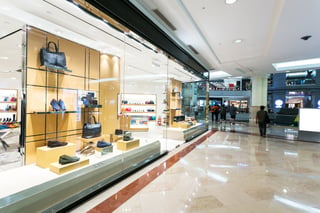 What causes customers to feel welcomed into your store – to want to stick around and look around? One of the most important elements of customer comfort is lighting. Lighting in retail is subtle, in that customers shouldn’t be overtly aware of it, yet you can use different types of lighting to lead shoppers’ eyes around your store.
What causes customers to feel welcomed into your store – to want to stick around and look around? One of the most important elements of customer comfort is lighting. Lighting in retail is subtle, in that customers shouldn’t be overtly aware of it, yet you can use different types of lighting to lead shoppers’ eyes around your store.
Lighting in retail is as important for grocery stores as it is for apparel or hard goods. Although many retailers tend to focus on cost savings attainable by upgrading lighting design and fixtures, some in the industry call lighting the “silent salesperson” because it can have such a significant impact on purchasing behavior.
The accent is now on accent lighting.
Of course every store needs a certain amount of ambient light, but accent lighting does just what the name implies – highlights certain departments or sections of your store, certain displays, or even individual items. It’s like a different form of signage, and it makes your interior more visually interesting. Using more accent lighting and less ambient lighting also saves energy.
Consider whether your merchandise will look its best with down-lighting aimed at horizontal surfaces – say, for stacked apparel – or with angled lighting aimed at the front surface of packaged items on gondola of industrial shelves, such as in a grocery or home improvement store. Highly specialized items such as jewelry require even more careful lighting to look their most alluring.
Since effective merchandising requires frequent refreshing and even relocation of displays, choosing flexible lighting systems such as track lighting or adjustable mono-point lights can make adjusting for new displays much easier.
Going green is budget-friendly as well as eco-friendly.
Light-emitting diode (LED) fixtures are rapidly growing in popularity, for multiple reasons. They:
- Use vastly less energy.
- Last about 30 times longer than incandescent lamps.
- Do not produce heat, which can damage some types of merchandise and drive up cooling costs.
- Put out “clearer” light, improving safety, and making work areas easier on the eyes for staff.
- Work particularly well to light outdoor areas such as walkways and loading docks.
- Costs are coming down, making them even more attractive long term.
What lamp types should you choose?
While LED lighting is gaining favor, traditional incandescent lights are losing favor because they are inefficient, produce considerable heat, and don’t meet new energy conservation requirements. But there are several other options:
- Linear fluorescent lamps are usually used for overhead lighting or for refrigerated display cases.
- Compact fluorescent bulbs are far more efficient than incandescent lamps, but they are not suitable for accent lighting.
- Halogen lamps produce bright ambient light, but they also produce heat.
- Ceramic metal halide lighting is a good option if you require high contrast or have very high ceilings.
And there’s one more important consideration for lighting in retail: different lamps put out different colors of light, so it’s crucial to select the tones that will enhance your store’s overall ambiance as well as your particular types of merchandise.
